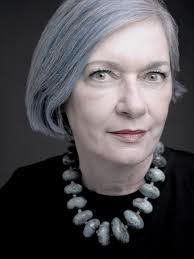
I had a visit with the Queen this past week. Not Elizabeth II. No one with any royal blood really. But she has certainly worn a crown, of sorts, as the best at what she does. In fact, she has won gold and silver recognition in her profession. She is a writer, a writer of one of the oldest forms of journalism and among the most actively followed sections of published newspapers – the obituary.
“Her subjects (are) the famous as well as the unknown,” said a press release promoting her most recent book. “Sandra Martin is the obit Queen of Canada.”
About 10 years ago, journalist Sandra Martin was working at the Globe and Mail writing book reviews and arts features. She had already won a batch of National Magazine Awards, the Atkinson and William Southam Journalism Fellowships and a lectureship at the University of Victoria. She said to me recently that she didn’t think another interview and feature would reveal much more of Margaret Atwood than had already been revealed. She discovered that the job of writing obituaries – stories about those who’d recently died – was coming open at the Globe.
“Are you interested in the Siberia of journalism?” someone asked her. She was, but as far as she was concerned, right from the beginning, she viewed obituaries as “writing about life, not death.”
Martin jumped into her work. She approached the task of capturing her subjects not so much as biographical sketches of lives lived, but more as a chance to revisit their accomplishments and shortcomings. She explained that in obituary writing, the difference between humdrum and compelling rested in the writer’s ability to document weaknesses, celebrate strengths and place the person’s life into the context of what else was happening around them.
“What struck me about Rocket Richard,” she pointed out as an example, “was how vulnerable he was. He was a star in the radio era, the first francophone hockey star… and he got caught up in the controversies that existed between Quebec and the rest of Canada.”
Martin said she was also inspired by the lives of the women whose obituaries she wrote. Her recounting of the life of Bertha Wilson was a perfect example. At 31, a homemaker and minister’s wife, in 1954 Wilson manages to fight her way into law school, among the first women to be accepted. And in time, dedicating her life not to raising a family but to her study of law, Wilson rises to become the first woman to sit on the Supreme Court of Canada bench. She then participates in many of the key decisions securing women’s rights, including a woman’s constitutional right to choose to have an abortion; the 25th anniversary of that decision was marked this past week.
“It is not just a medical decision,” Wilson wrote in the 1988 Henry Morgentaler decision. “It is a profound social and ethical one as well. It asserts that the woman’s capacity to reproduce is to be subject not to her control, but to that of the state.”
At some point in her decade-long career at the Globe and Mail, a colleague asked Martin, “So how’s life on the dead beat?” Sandra realized there was something in that and several years ago. She began assembling some of her past work and some specially prepared portraits in a book “Working the Dead Beat: 50 Lives that Changed Canada.” In the book she includes her obits of politicians (Pierre Trudeau, Duff Roblin and Louis Robichaud); artists (Pierre Berton, Celia Franka and Oscar Peterson); entrepreneurs (Ed Mirvish, Ted Rogers and Ken Thomson); and architects of life (Arthur Erickson, Jane Jacobs and Donald Marshall).
“There is no such thing as an uninteresting life,” Martin said, “but there are badly researched and written accounts.”
Sandra Martin is old school when it comes to getting the story. She learned the profession – as I did – when we researched at stacks and shelves in the library, met with sources in person for interviews and bashed out our stories on the keys of manual typewriters. Not that modern journalism is less effective. “I just love the hands-on digging,” Martin said.
Among the more fascinating stories behind Sandra Martin’s journey into obituary writing was one she has never captured in writing. It involved Alfred Nobel, the man responsible for creating the Nobel Peace Prize, although that wasn’t his first claim to fame. Martin explained that Nobel, also the inventor of dynamite, one day picked up a newspaper containing the obituary of his brother, Ludvig; except that the writer had mistakenly thought it was Alfred who had died. The obit writer dwelled on Nobel’s explosive invention and all the destruction it had wrought. Nobel realized he could “rehabilitate his own legacy” and became a philanthropist, creating and funding the Nobel Peace Prizes. Sandra Martin considers her exploration of the obituary much the same way – creating her own legacy.
“What would you want in your obituary?” a colleague asked Martin.
“That I asked good questions and wrote good sentences,” she replied.